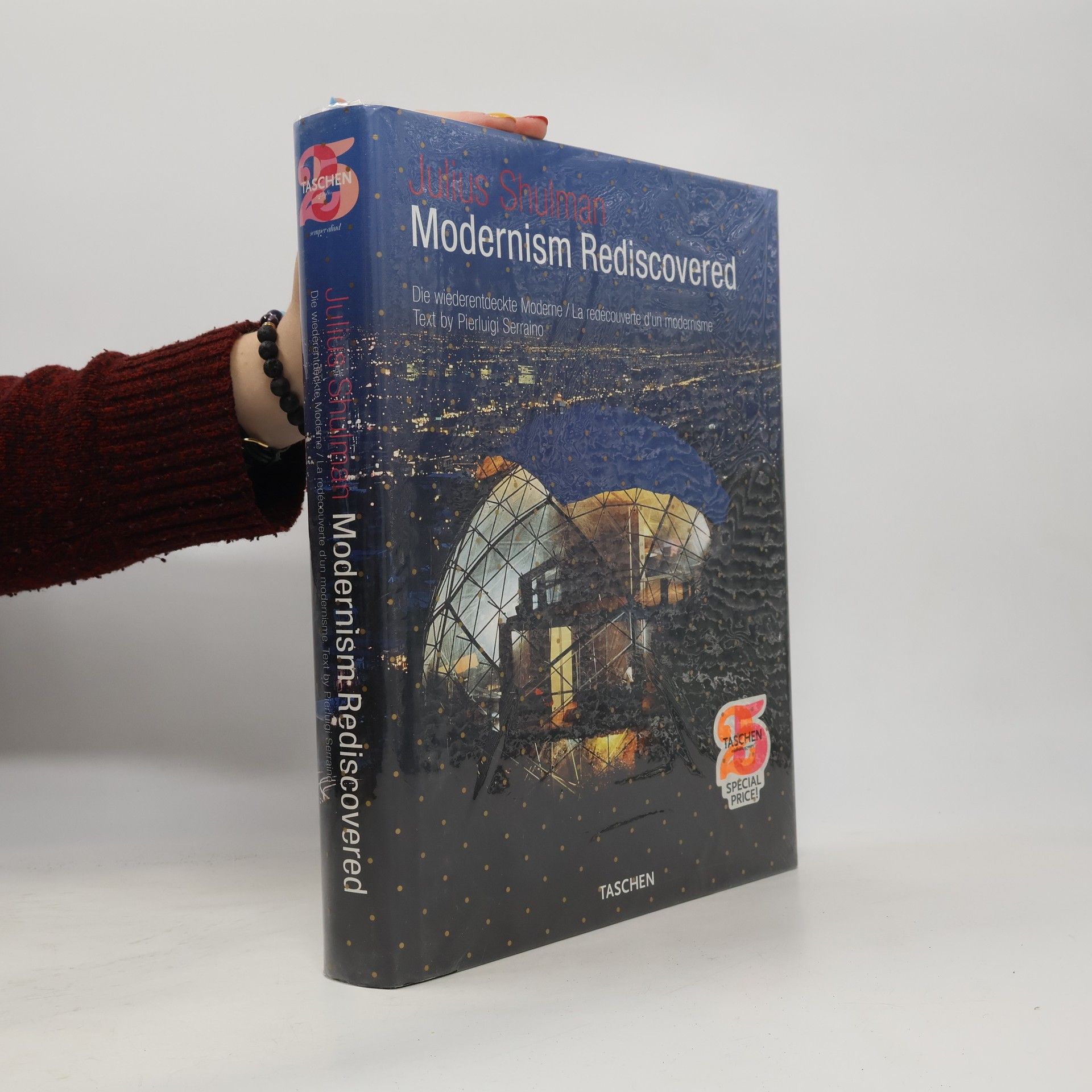The book showcases the innovative landscape architecture and garden design of mid-century North America, featuring the work of renowned photographers Julius Shulman and Ezra Stoller. It highlights previously unpublished photographs that capture the essence and creativity of this transformative period in design, offering a unique visual exploration of the era's influential figures and their contributions to the field.
Pierluigi Serraino Book order






- 2024
- 2023
Die Gebäude, die in unserer Erinnerung den Geist der Architektur der 50er und 60er Jahre verkörpern, sind die, deren Abbildungen überall durch Magazine und Bücher verbreitet wurden. Doch was ist mit denen, die irgendwo auf der Strecke geblieben und kaum oder nie veröffentlicht wurden? Der Austausch von visuellen Informationen ist ausschlaggebend für die Entwicklung und Förderung von Architekturströmungen. Wenn ein Gebäude nicht weithin bekannt ist und seine Fotos kaum oder nie publiziert werden, so wird es niemals Gegenstand des architektonischen Diskurses werden. Viele der von Julius Shulman fotografierten Bauten erlitten dieses Schicksal - sie wurden vergessen. Mit diesem Buch bringt TASCHEN sie zurück ans Licht und würdigt den kalifornischen Modernismus in all seinen Formen. Das bisher wenig beachtete Archiv von Julius Shulman zeigt uns eine andere Seite des Modernismus, um die es so viele Jahre lang ruhig gewesen ist. Modernism Rediscovered versammelt beinahe 300 vergessene Meisterwerke und zollt den weniger bekannten, doch hervorragenden Vertretern der modernen Architekturbewegung Tribut. Es ist, als schleiche man sich in eine private Geschichte und in Häuser hinein, die bis jetzt nur selten wahrgenommen und kaum geschätzt wurden.
- 2022
This book celebrates seventy years of outstanding design by Dreyfuss + Blackford Architecture. It starts with historical milestones, shows some examples of process and practice, and concludes with a few consequential recent projects.
- 2013
Die Gebäude, die in unserer Erinnerung den Geist der Architektur der 50er und 60er Jahre verkörpern, sind die, deren Abbildungen überall durch Magazine und Bücher verbreitet wurden. Doch was ist mit denen, die irgendwo auf der Strecke geblieben und kaum oder nie veröffentlicht wurden? Der Austausch von visuellen Informationen ist ausschlaggebend für die Entwicklung und Förderung von Architekturströmungen. Wenn ein Gebäude nicht weithin bekannt ist und seine Fotos kaum oder nie publiziert werden, so wird es niemals Gegenstand des architektonischen Diskurses werden. Viele der von Julius Shulman fotografierten Bauten erlitten dieses Schicksal - sie wurden vergessen. Mit diesem Buch bringt TASCHEN sie zurück ans Licht und würdigt den kalifornischen Modernismus in all seinen Formen. Das bisher wenig beachtete Archiv von Julius Shulman zeigt uns eine andere Seite des Modernismus, um die es so viele Jahre lang ruhig gewesen ist. Modernism Rediscovered versammelt beinahe 300 vergessene Meisterwerke und zollt den weniger bekannten, doch hervorragenden Vertretern der modernen Architekturbewegung Tribut. Es ist, als schleiche man sich in eine private Geschichte und in Häuser hinein, die bis jetzt nur selten wahrgenommen und kaum geschätzt wurden.
- 2009
Eero Saarinen was one of the 20th century's great visionaries, both in the fields of furniture design and in architecture. Marrying curves and dynamic forms with a Modernist aesthetic, he brought a whole new dimension to architecture.
- 2006
NorCalMod : icons of northern California modernism
- 288 pages
- 11 hours of reading
Many people think modernist architecture never flowered in California north of the San Fernando Valley. NorCalMod dispels that notion in a copiously illustrated history showcasing extraordinary examples of its proud contribution to the Bay Area and environs. As a style, modernist architecture was hotly debated in its day (why create modern structures where such distinctive Victorian and Arts and Crafts buildings already existed?) pulling heavyweights such as Frank Lloyd Wright, Lewis Mumford, and Walter Gropius into the fray. Ultimately, that existing "Bay Region Style" would remain the area's architectural hallmark, but not before hundreds of important modernist projects, many still standing yet unjustly neglected today, had been established. The remarkable photos in this book open our eyes to a long-lost chapter in the history of California architecture and make NorCalMod a volume to be enjoyed by those interested in California history and style as well as by architecture students and professionals.
- 2005
Eero Saarinen
- 96 pages
- 4 hours of reading
Eero Saarinen (1910-1961) was one of the 20th century's great visionaries, both in the fields of furniture design (he created the ubiquitous Knoll "Tulip" chairs and tables, for example) and in architecture. Among his greatest accomplishments are monuments that shaped architecture in postwar America and became icons in themselves: Washington D.C.'s Dulles International Airport, the very sculptural and fluid TWA terminal at JFK Airport in New York, and the 630-foot high "Gateway to the West," the Arch of St. Louis. Marrying curves and dynamic forms with a modernist aesthetic, he brought a whole new dimension to architecture.
- 2000
Modernism Rediscovered
- 415 pages
- 15 hours of reading
This collection pays homage to California Modernism in all its forms. Bringing together nearly 250 forgotten masterpieces, Shulman pays tribute to these lesser known yet outstanding contributions to the modern architectural movement.
